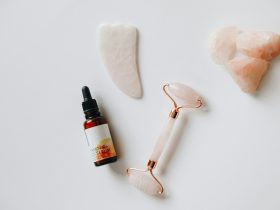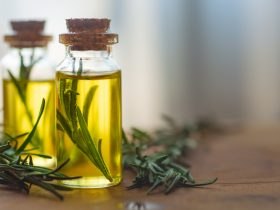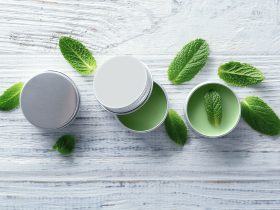Oily hair is characterized by an appearance of greasiness or a wet sheen, typically resulting from the overproduction of oil by the scalp’s sebaceous (oil) glands. Common factors contributing to oily hair include infrequent washing and hormonal imbalances.
Effective management strategies typically involve washing hair regularly with a focus on the scalp area, as well as minimizing the use of conditioner near the scalp.
This article provides a comprehensive overview of the causes and treatment options for oily hair, as well as advice on styling and product selection to help mitigate its impact.
Oily Hair Causes
There are multiple factors that can contribute to oily hair. Understanding these factors can help individuals better manage and address this issue:
- Skin Conditions: Certain skin conditions, such as seborrheic dermatitis, can impact the function of oil-producing glands in the scalp. Seborrheic dermatitis is characterized by red, scaly patches and can lead to increased oiliness, among other symptoms. Another condition is sebaceous hyperplasia, where the oil glands become enlarged and produce more oil than normal.
- Scalp Infections: Infections, such as a scalp yeast infection (Candida), can create a moist environment that encourages the growth of bacteria and fungi. This can lead to an overproduction of oil, causing the hair to appear greasy and unkempt.
- Hormonal Imbalances: The body’s hormonal balance can play a significant role in oil production. Fluctuations in estrogen and progesterone, which commonly occur during the menstrual cycle, can lead to increased oiliness in the skin and scalp.
This is why some individuals may notice their hair becoming oilier during certain times of the month. Similarly, elevated levels of testosterone, such as those seen in conditions like Polycystic Ovary Syndrome (PCOS), can also lead to increased oil production, potentially affecting the scalp and hair.
- Genetics: Finally, genetics can also play a role in oil production. Some individuals may be genetically predisposed to producing more oil in their scalp and hair follicles.
- Parkinson’s Disease: This neurological disorder has been linked to an increased risk of seborrheic dermatitis, which can lead to oily hair. Additionally, Parkinson’s disease can cause increased sweating, which can further contribute to oily hair.
- Other Health Conditions: Certain health conditions, such as diabetes, can also affect the skin and oil production. Individuals with diabetes may experience increased oiliness in their scalp and hair.
- Medications: Some medications can cause side effects that include changes in oil production. For example, oral contraceptives can affect hormone levels, which may influence oil production in the skin and scalp.
Understanding the factors that contribute to oily hair can help individuals take steps to manage and address this issue. If you are concerned about your hair’s oiliness, it is always best to consult with a healthcare professional for a thorough evaluation and personalized advice.
Do Hair Care Products Make My Hair Oily?
When it comes to oily hair, some hair care products may exacerbate the issue. Generally, shampoos and heavy, moisturizing conditioners can contribute to increased oiliness by weighing hair down.
To prevent hair from becoming greasy, it’s essential to concentrate shampoo application on the scalp to effectively remove excess oil. Conversely, with conditioner, focus on applying it to the mid-section to the ends of your hair, avoiding the scalp area altogether.
Experts advise choosing hair care products specifically tailored to your hair type. For example, if you color your hair, opt for a shampoo designed for color-treated hair. Similarly, if you struggle with dandruff, consider using a dandruff shampoo.
Factors like genetics, infrequent hair washing, using the wrong shampoo for your hair type, or other skin and health conditions may lead to faster production of scalp sebum. It’s important to pay attention to your hair care routine and any underlying conditions that might contribute to the quick buildup of oil on your scalp.
Do Styling Products Contribute to Oily Hair?
When it comes to styling products, those designed to hold hair in place or create texture can be problematic for individuals with oily hair. These products often have a heavier consistency that can make oily hair appear greasy very quickly.
To avoid this, opt for lighter alternatives such as hairsprays or mousses that provide a lighter hold without adding extra weight to the hair. Avoid products like pomades, waxes, and gels that are heavier and can worsen oiliness.
Additionally, steer clear of hair oils, as these can add an extra layer of oil to the hair, making it appear even greasier.
Natural Ways to Manage Oily Hair
In addition to practicing correct washing and conditioning methods, there are a few additional steps you can take to manage oily hair:
- Dry Shampoo: This is an effective way to absorb excess oil and freshen up hair between washes. Simply spray it onto your roots and then brush or massage it through your hair.
- Regular Brushing: Brushing your hair helps to distribute the natural oils from your scalp throughout the length of your hair, which can prevent excessive oil buildup at the roots.
- Clarifying Shampoo: Use a clarifying shampoo once a week to remove any buildup of styling products or oils that may be contributing to the problem.
- Scalp Scrubs: These can help exfoliate your scalp and remove any dead skin cells or buildup that may be contributing to oily hair.
As for the frequency of washing, it can depend on your hair type. African American hair, which tends to be more dry and fragile, can typically go longer between washes, with every one to two weeks being sufficient.
On the other hand, straight hair is more prone to showing grease and may need to be washed more frequently – perhaps five to six times per week, according to one study. Ultimately, it’s essential to find a balance that works for your hair type and lifestyle.
Medication for Oily Hair
If the root cause of your oily hair is a medical condition, addressing that condition is the most effective way to manage the issue.
For instance, if a hormonal imbalance, such as those experienced during your menstrual cycle or due to Polycystic Ovary Syndrome (PCOS), is to blame, certain types of birth control may help regulate oil production.
In the case of seborrheic dermatitis, over-the-counter or prescription dandruff shampoos might help alleviate an oily scalp. If your oily hair stems from a scalp yeast infection, treatment with antifungal medication can help resolve the underlying issue and restore the balance of oils on your scalp.
It is always best to consult a specialist and they will prescribe the right medication depending on the actual cause of your oily hair.
How to Style Oily Hair
When it comes to managing oily hair, the right hairstyle can make a world of difference. If your hair is long, consider opting for ponytails, braids, or buns. These styles not only keep your hair in place but also help to camouflage any greasy roots.
For those with shorter hair, covering the scalp can be an effective way to deal with oiliness. Try wearing scarves, headbands, hats, or hair clips to add a stylish touch while concealing any oily areas.
You can also experiment with different hair partings; parting your hair on the side instead of down the middle can help cover more of the oily spots and make them less noticeable.
Ultimately, the key to managing oily hair is finding a hairstyle that not only looks good but also helps to minimize the appearance of oiliness. Experiment with different styles and products to find what works best for you.
Final Takeaways
Dealing with oily hair can be frustrating, but it’s important to remember that it’s a common issue and that there are several ways to manage it.
Whether you choose to adjust your hair care routine, try natural remedies, or seek help from a professional, there’s likely a solution that will work for you. By taking steps to address the root cause of your oily hair, you can not only improve its appearance but also support the overall health of your hair and scalp.
Remember to be patient and consistent with your efforts, and don’t hesitate to reach out to a healthcare provider or dermatologist if you have concerns or need additional guidance.
















Find Us on Socials